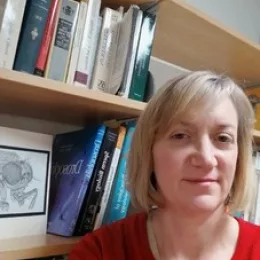Generously funded by the European Society for Evolutionary Biology (ESEB) Special Topics Network (STN) program.
Website: https://thermal-fertility-network-eseb.org/
Climate change poses a major threat to biodiversity and predictions about future developments are dominating the news. We want to contribute by focusing on the question of how altered temperature regimes affect reproduction. Current predictions on changes in species abundance and distribution in response to heat stress often use species critical thermal limits (CTL) and rarely consider fertility. This is a potentially serious flaw, because there is substantial evidence that fertility can be extremely vulnerable to high temperatures, such as the evolution of external testes in mammals and insects losing fertility at sublethal temperatures document. Within this network, we want to bring together scientists interested in theoretical and empirical research on species thermal fertility limits and how this may affect species’ responses to climate change. The overarching aim is to unite the different research areas interested in this field ranging from field ecologists, laboratory experimentalists, reproductive biologists, taxonomists, microclimatists and theoreticians to assemble and provide a database with relevant thermal limit data covering a broad taxon base and repeated sampling effort for a selected core set of species across Europe.
Our initial focus is on invertebrates; given how easy many are to work with. Ultimately, though we are interested in the impact of temperature on fertility across the biological world. Hence, we encourage scientists working on reproduction in plants and vertebrates to consider joining. Our overall goal is to create a more focused and cohesive research field addressing research on thermal fertility limits and advance the field to identify and provide the data needed.
Within the STN we want to bring together researchers to
- outline and agree on protocols to collect data on fertility limits across a broad taxonomic base
- address the relative role of adaptive and plastic responses to thermal heterogeneity
- model how this knowledge changes predictions on species’ responses to climate change
To achieve this we invite interested European groups to jointly collect data across diverse taxa, to develop a broad and cohesive database. To facilitate this we will organise workshops, summer schools and ESEB conference satellite meetings that are aimed to:
- provide a forum for researchers (from PhDs to professors) working in areas of thermal evolution and ecology, local adaptation, and evolutionary modelling, to meet and interact
- determine a shared best-practice methodology to test both thermal fertility limits and critical thermal limits, resulting in a set of standardized protocols that can be widely employed both in the wild and the laboratory to collect comparable data across diverse species and populations
- identify a core set of widely distributed species across Europe, and determine standardized sampling procedures across different regions, to test for local adaptation and clinal differences in response to thermal heterogeneity
- motivate development of theory linking spatial and temporal thermal heterogeneity with the evolutionary and ecological consequences of thermal fertility limits
- explore how microclimatic thermal environments might mitigate the potential to predict species’ responses to climate change
- identify and address theoretical gaps
- design workshop-linked summer schools to train young researchers in the relevant empirical methodologies as well as to teach theoretical and species distribution modelling in subsequent meetings.
- create a shared database of thermal fertility limits
How to join?
Website: https://thermal-fertility-network-eseb.org/
If you are interested in joining, please contact Claudia Fricke (claudia.fricke@zoologie.uni-halle.de), Amanda Bretman (a.j.bretman@leeds.ac.uk), Tom Price (t.price@liverpool.ac.uk) or Rhonda Snook (rhonda.snook@zoologi.su.se).




Active consortium membership requires a commitment and contribution to at least one of the following:
(1) lend your expertise to contribute towards formulating the best practise standard protocol or modelling
(2) use the standardized protocols to collect and contribute data to the thermal fertility limit data base
(3) organise a meeting/ workshop
